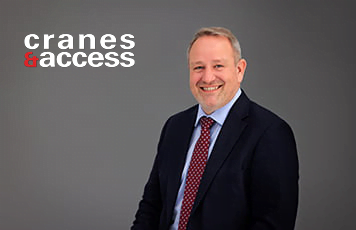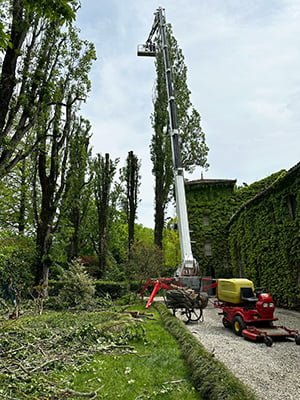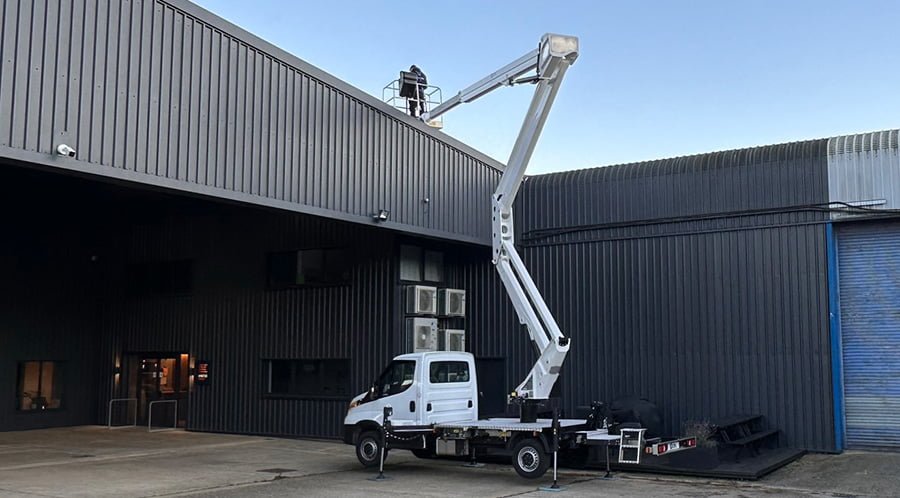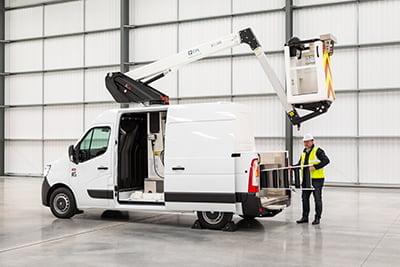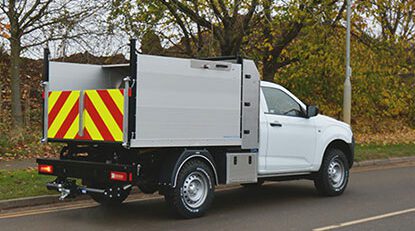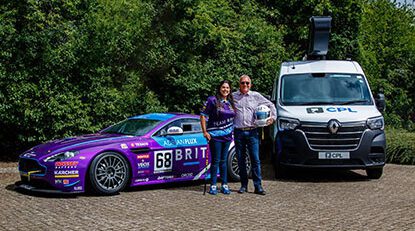Cranes & Access Magazine interview our Commercial Director
CPL – the new norm
Kettering, UK based CPL has transformed its operations since it was established in the Spring of 2011. Part of French international manufacturer Klubb since 2018, the company has developed and grown into a leading producer of vehicle mounted lifts as well as being the UK distributor for Klubb, Palfinger Platforms, Almacrawler, Dinolift, Isoli and now Palazzani. Mark Darwin spoke with commercial director Mark Sawyer following a company Open Day last month.
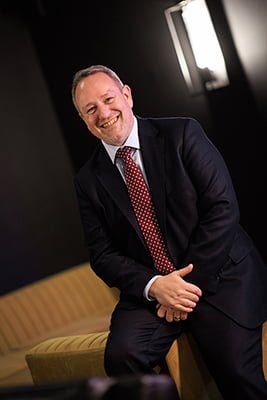
“Open Days are interesting because they allow visitors to find out more about the equipment and whether we are the right partner for their needs,” says Sawyer. “We had a variety of people attend – from a small arb company with two employees right up to one of the major Utility companies which has ordered an additional 65 units. There are still people out there that think CPL is just about 4×4 pickup lifts, almost operating out of a shed. They should visit us now and find out what we are really all about.”
How involved are you in Klubb group operations?
“I am employed by CPL but over the past 18 months I have become more involved in some group activities. I recently took over a major project – implementing a CRM system – that will be applied to all group companies aiming for a consistency in language, reporting metrics and Key Performance Indicators.
While Klubb is made up of individual companies – Klubb in France, CPL in the UK, Isoli in Italy, Hematec in Germany and Mondia in Belgium etc – it is looking to become a fully connected and interlinked group. For example, CPL managing director Paul Murphy and finance director Michela Murphy have been working within Isoli since its acquisition just over a year ago. In areas where CPL has become particularly good we are leveraging that to benefit the group as a whole.”
The company has opened a fifth facility – Site 5 – in the nearby village of Burton Latimer, and last year produced and sold over 650 CPL/Klubb vehicle mounted lifts and hopes to improve again this year, as well as selling more machines from Palfinger, Isoli and Almac.
“The wide product mix helps provide alternative solutions for working at height for our existing customers”, says Sawyer. The company plans to add the Isoli recovery trucks to its range this year, possibly along with refuelling tankers from Titan Aero, which Klubb acquired a few months ago.
How independent is CPL with regard to the Klubb products it offers ?
“We have absolute ownership on this – We evaluate which is the right product or suite of products for CPL,” he says. “There are companies in the group with equipment that is simply not best suited to the UK and sometimes we offer a choice, for example we sell a full range of 20+ metre truck mounted platforms from Palfinger as well as from Isoli, we also have the flexibility of products from Almac, Dinolift and Palazzani to ensure the customer gets the machine that is right for their business need rather than what we have to sell. It’s a total solution approach.
“International sales are a group function, I therefore need to offer a portfolio of products that will help CPL solve any working at height challenge, whether the customer wants it for roofing, cladding, trees, utilities, substations, wind turbines or city centre window cleaning. We not only sell the equipment but can manage the whole product lifecycle. This is very much the CPL/Klubb message – it is not about selling metal it is about building relationships and offering the right solution to safely work at height.”
“Customers invest a lot of money in the equipment – a van mount that used to cost £45-50k a few years ago is now £65-70k – so we want to make sure it is the right machine for the job and can perform over three, four or five years. We also want to keep that asset running because we recognise the risk customers’ take with financing and the need to show a return on investment. We are seeing a trend among companies to keep equipment longer, so users are more interested in the service and maintenance support. This is why we partner with the chassis manufacturers and push for full UK/EU approval, so they are fully supported by the manufacturer.”
Are you looking for other products?
“We are not looking right now as we need to concentrate on the partnerships that we already have. There is also uncertainty over the number of Chinese entrants into the market and a lot of interest in the EU anti-dumping case. As a group we are looking further afield such as exploring India, Vietnam and South America where there are plenty of opportunities. In the UK we took on Dinolift last year and recently added Palazzani spider lifts, while we are only just starting to get traction with Almac scissor lifts after two years. This year we need to get Palazzani up and running and then look at the Isoli recovery equipment.”
“Having said that, we have had approaches from seven other manufacturers already this year, we look into each one, so we are not saying no, but are not actively looking. From a CPL and group perspective building our own equipment is the most profitable. Buying and selling another manufacturer’s equipment is fine and helps iron out the wrinkles and gives us the flexibility to help companies with a range of equipment from 8m to 100m working height. In the larger truck mounted lift sector dominated by Palfinger, Ruthmann and Bronto, there are fewer than 100 units a year sold in the UK, Palfinger’s market share is around 25 percent which feels about right.”
“Similarly, with Almac, there are plenty of companies making competitive products for the height, but none with the unique bi-levelling system. But it will take some time for that technology to be adopted. We are starting to see Tier 1 companies adopt it which will then cascade down to other contractors and rental companies.”
“Looking at our three-to-five-year sales strategy, I see a saturation point coming, so we may start to see the market stabilise with a new ‘normal’. With elections in the UK and US, the continuing conflict in Ukraine and the Middle East etc the world could be in a very different place in 2025. Even though we are planning for a slight plateau, the market over the next three to five years for van and pick up mounted lifts looks good. Come 2026 we will be in the renewal phase of orders placed in the mental Covid and Brexit years!”
How has Brexit affected the company?
“Post Brexit there are challenges, the systems and processes are more complicated but if you can get those right, it becomes a bit more normal. After Brexit we had Covid and then faced microchip shortages and chassis delays. As a result, customers figured out the need to be more prepared and plan ahead. We saw a massive leap in orders with customers pre-booking build slots a year to two in advance.”
“Prices have now calmed down, while they are still very high, the volatility is not there – and prices for steel, aluminium, electronics and rubber are not going up and down like a yo-yo. This has allowed people to ease back and relax a little, as a result we are starting to see the market calming following a period of accelerated, almost false growth.”
“The sales numbers are still there, last week I took an order for 200 units, but they are for delivery next year, whereas we still have a few build slots available in June. Until recently we were booked solidly for 18 months however, I think the new order book norm for us is four to six months which means you are agile enough to go with demand but not so hamstrung to not know prices or when components might turn up.”
How is the sales process changing?
“The days of the door-to-door salesman is diminishing; we still need a sales professional. However, as technology has advanced, we have seen the people that started companies 15 to 20 years ago coming to retirement age, with a new generation of decision makers/buyers coming through. 57% of the purchase decision is done presale with internet research long before a company wants to engage with a salesperson and the expected trend over the coming years will see that rise to 80%. We are gearing up to utilise new technologies to assist in that. We have three salespeople plus myself and Paul Murphy, all active each day, and we do a lot of research and data mining enabling us to have more accurate data points so we can tailor our message.”
“No one yet has ever purchased online without any contact – but it is coming. If you look at other industries e.g. Mercedes cars in the UK for example it does not want you walking into a dealership, it wants you to buy on line where you can spec it, pick a colour and arrange to collect.”
Growing within the group
“We are gaining a bigger voice within the group on alternative ways to look at things. I am looking at 2, 5 and 10 years in the future, investing in processes and systems so that we are future proof and ready and customers come to us because they want the whole experience. Other companies are having similar thoughts, and some are possibly further advanced than us and even engaged in AI already, that is the logical next step.”
Are you techy?
“I like to stay abreast of new technologies and explore the ‘what if’ but I am not an expert – I couldn’t tell you how it works – but I can tell you why it would work for us or for you as a customer. There are still manufacturers talking about this new thing called ‘telematics’ which has been on machines for at least 15 years. Developments such as AI are moving technology on so quickly – remote surveys and operator-less platforms are all possible now but will take time to refine and be accepted. I find all this future technology exciting.
Size matters
“Our growth is a result of asking the customer what they really need. For example Telecom’s has hundreds of 15 metre, five tonne van mounted lifts, however 99.9 percent of their poles are only 12 metres long, two metres of which is below ground, so a 10-12 metre lift would be fine. This is why we have built them lots of 12.5 metre van mounts, which gives them a one tonne payload. It also knocked around £20k off the price of each unit.”
I love this job but there is so much to do,” he says. “We are flat out which is great, but I do wish there were 48 hours in a day, not because we are understaffed or under resourced but because there is so much going on and we have to take advantage of it while we can. It’s what gets me out of bed each day and I think ‘today is going to be epic and it is full of good things’.”
Source – Cranes & Access Magazine

